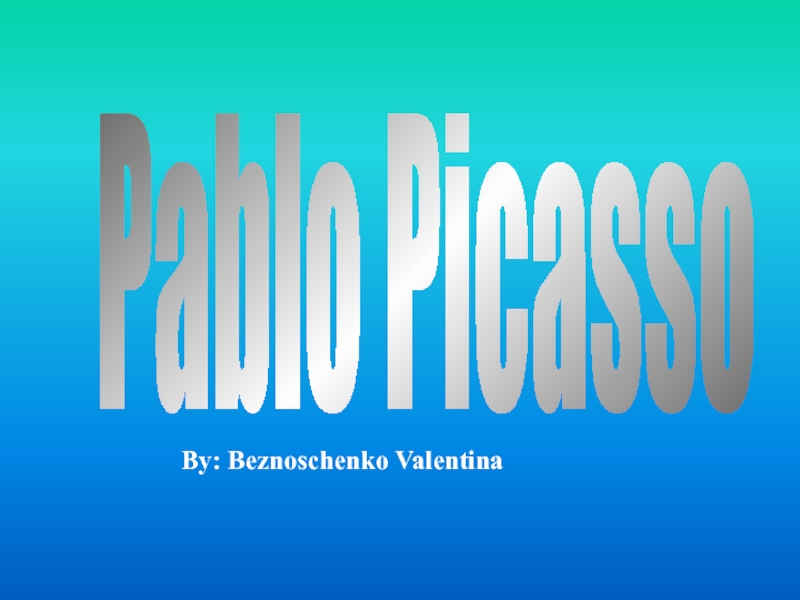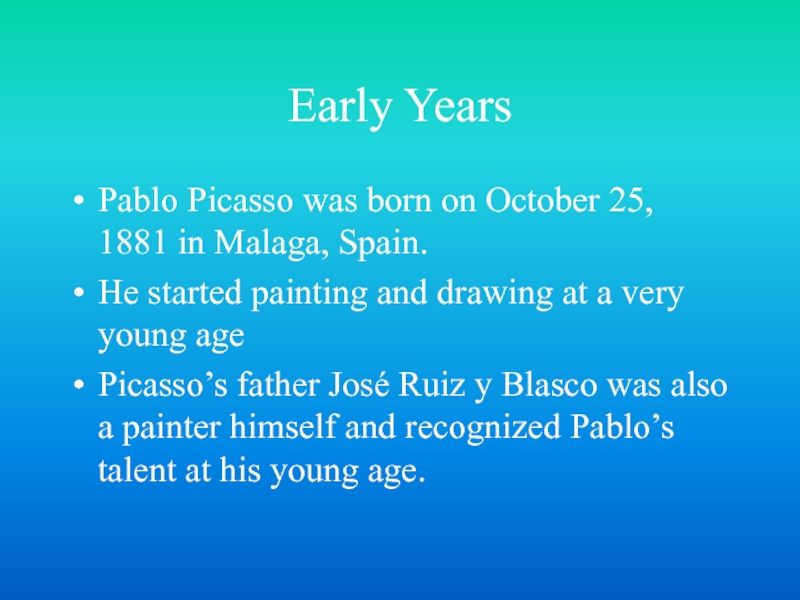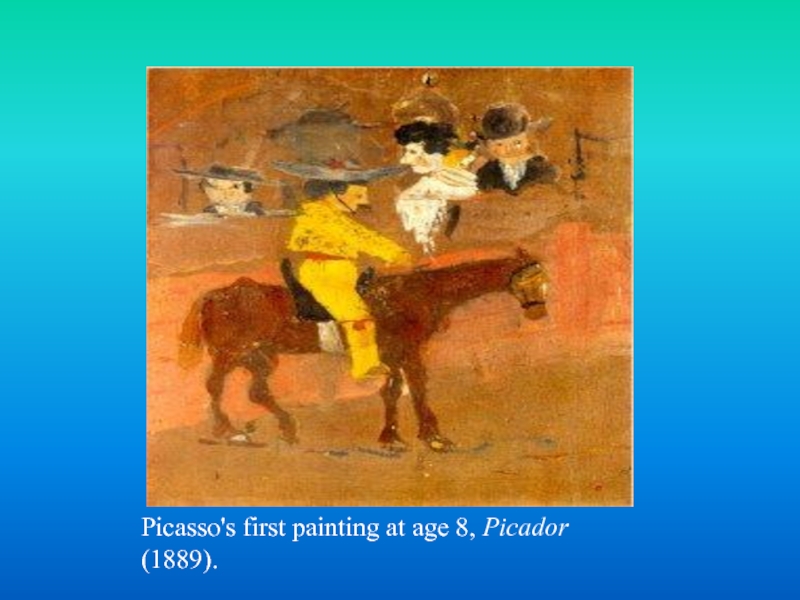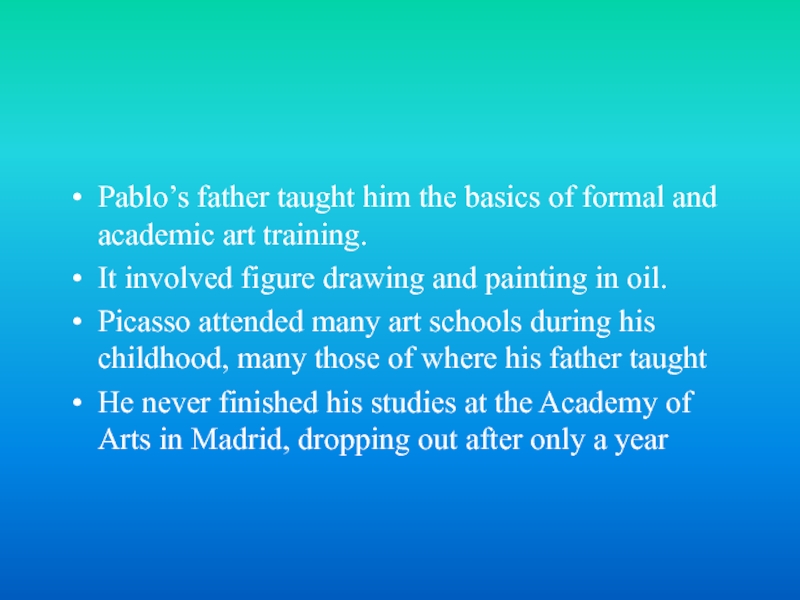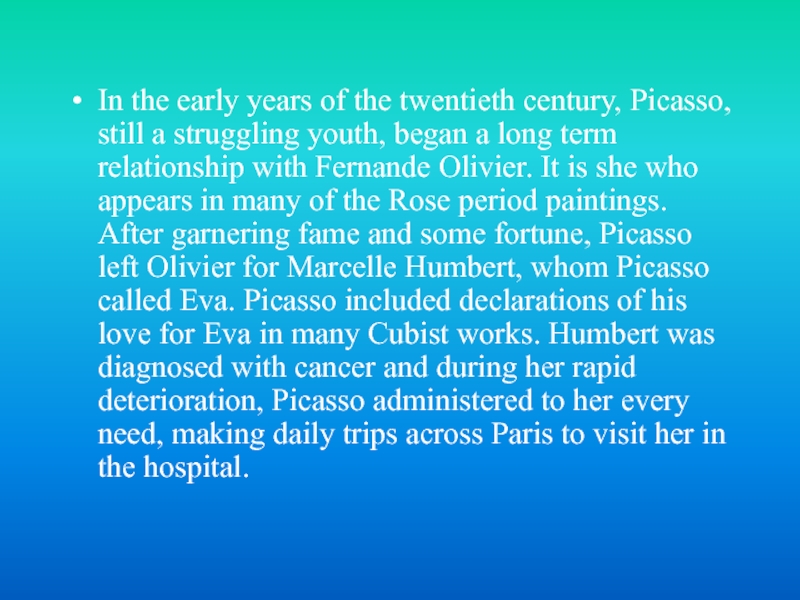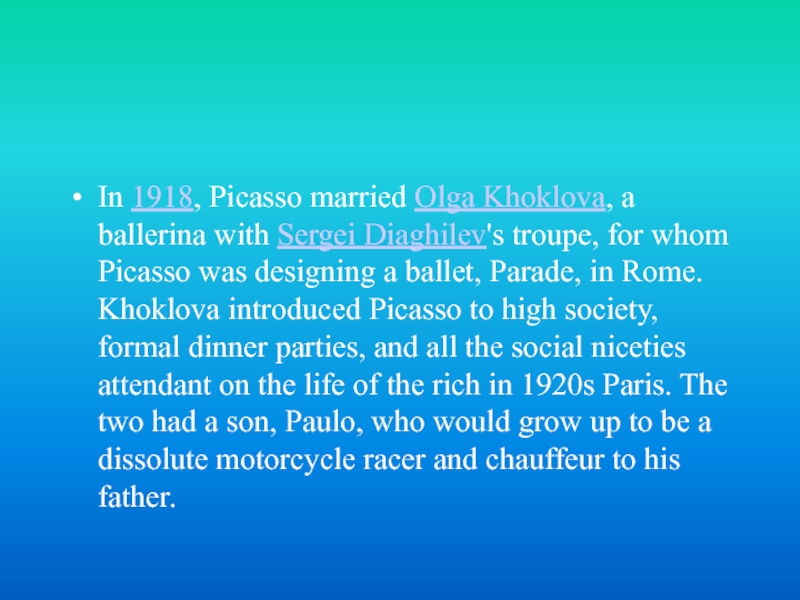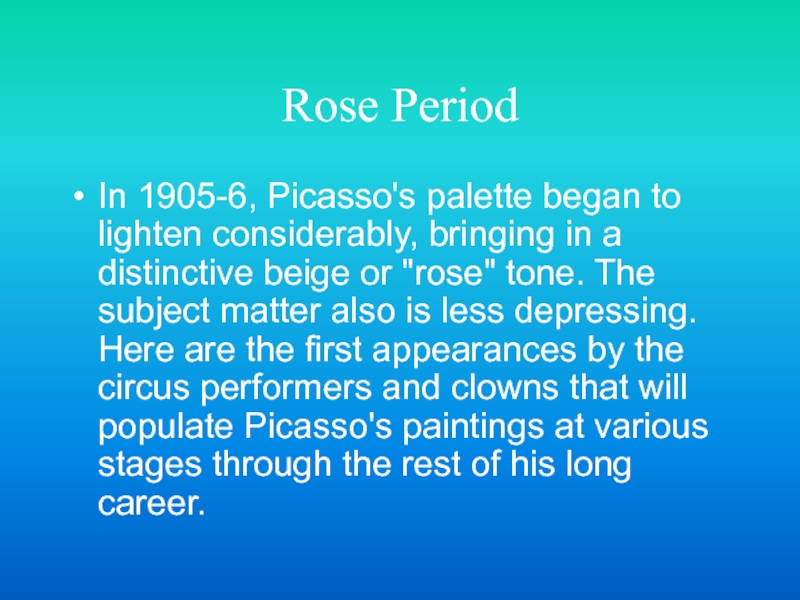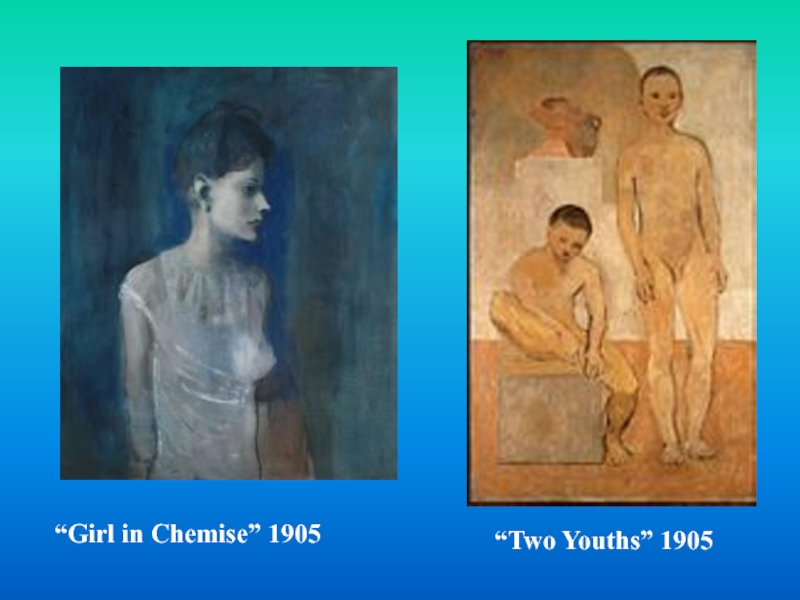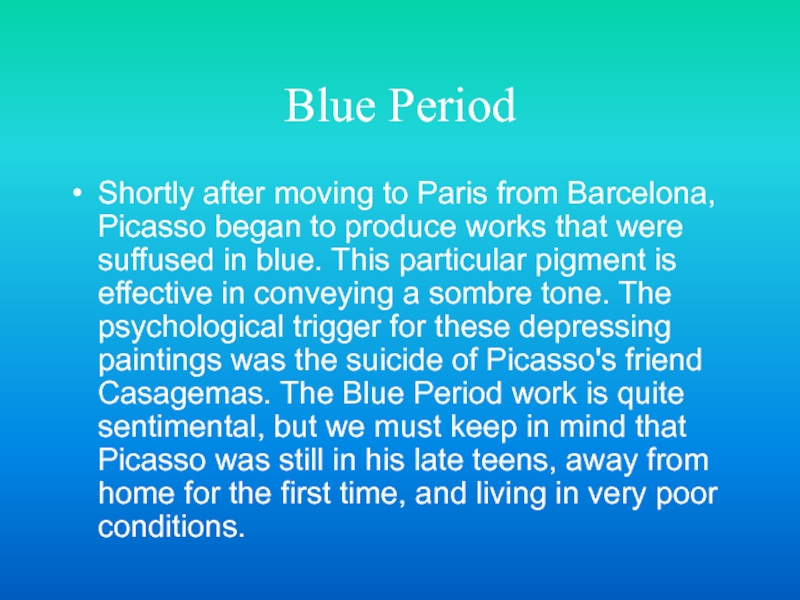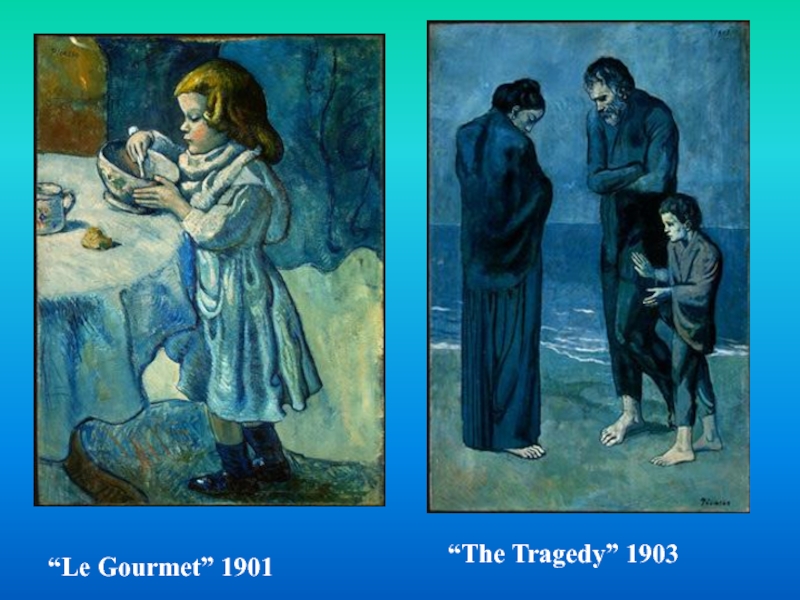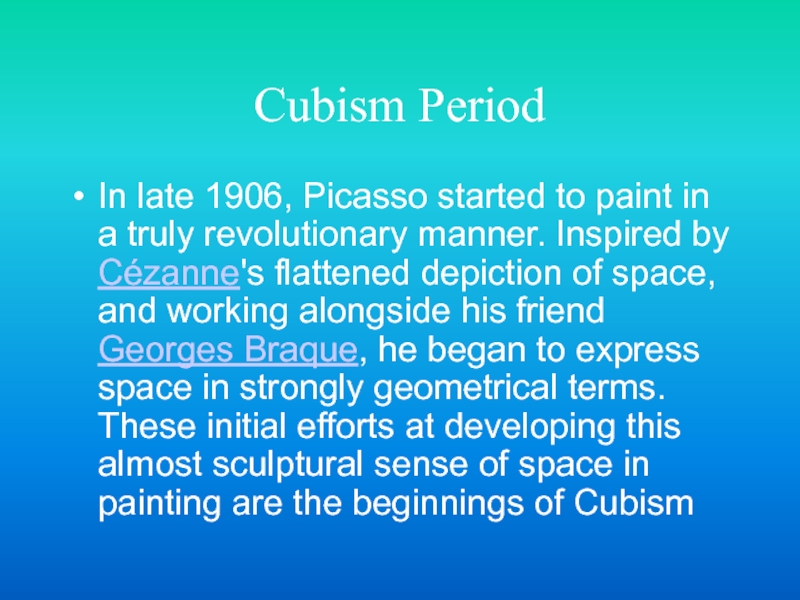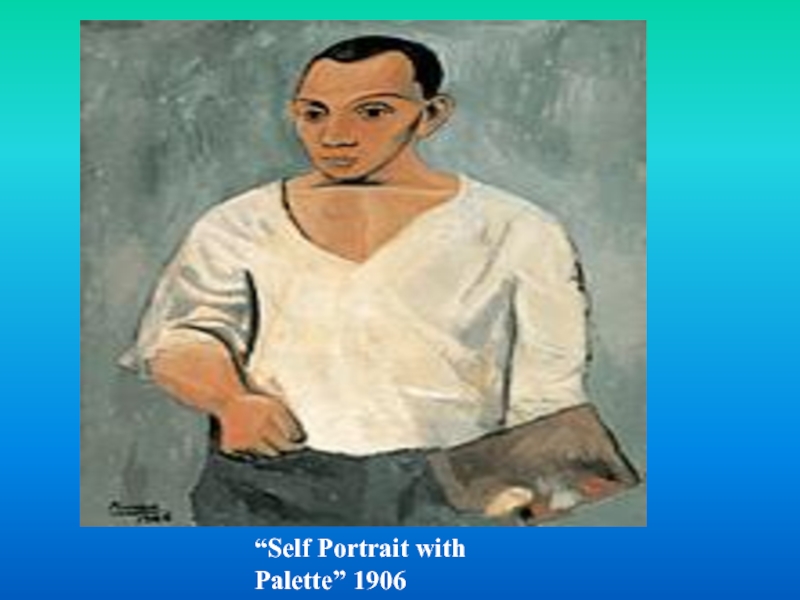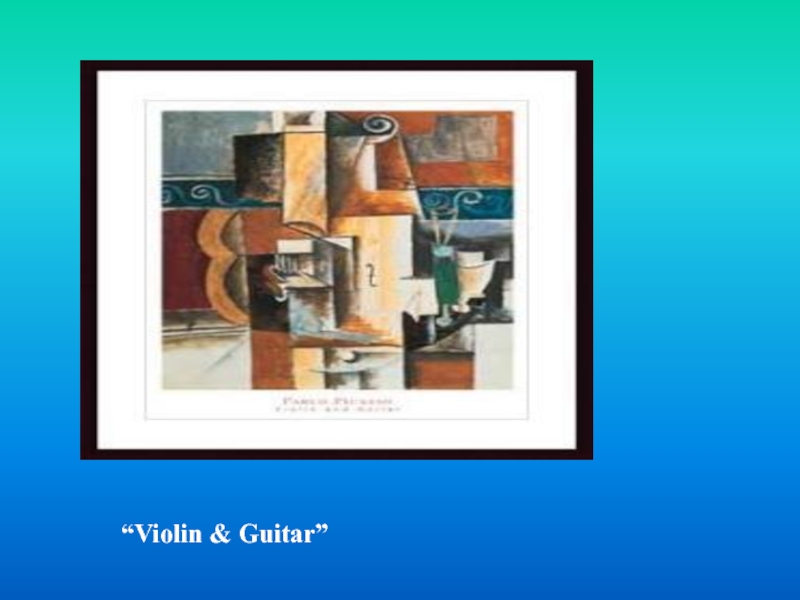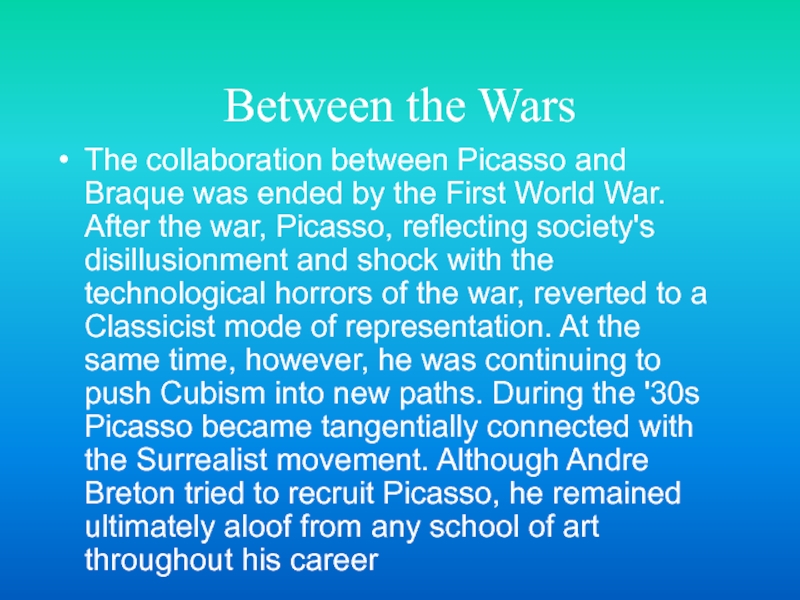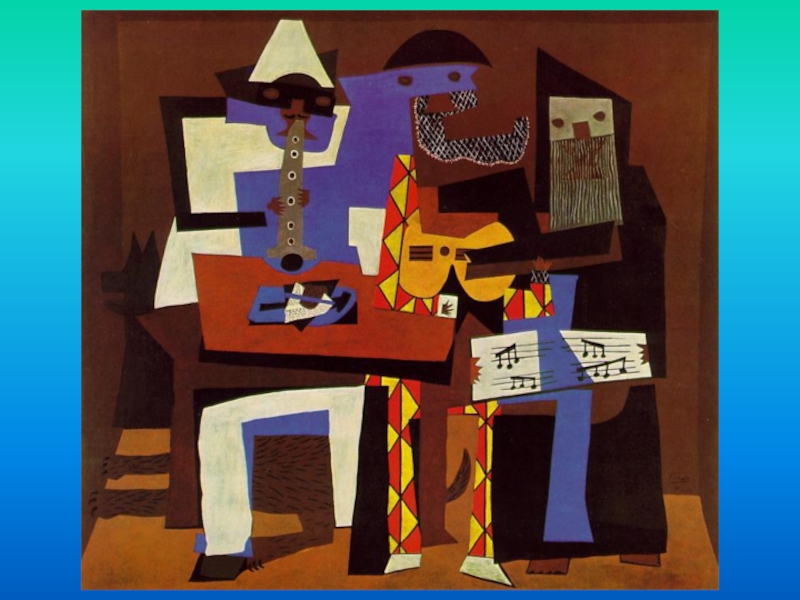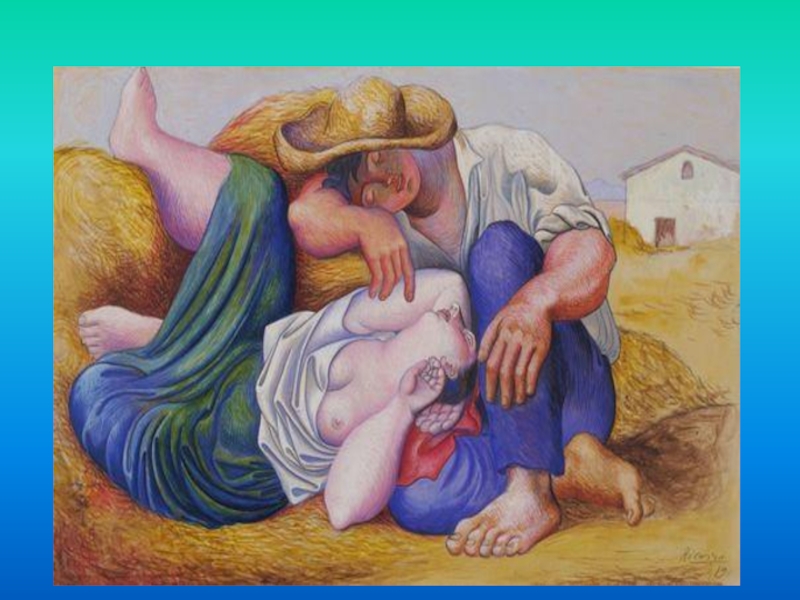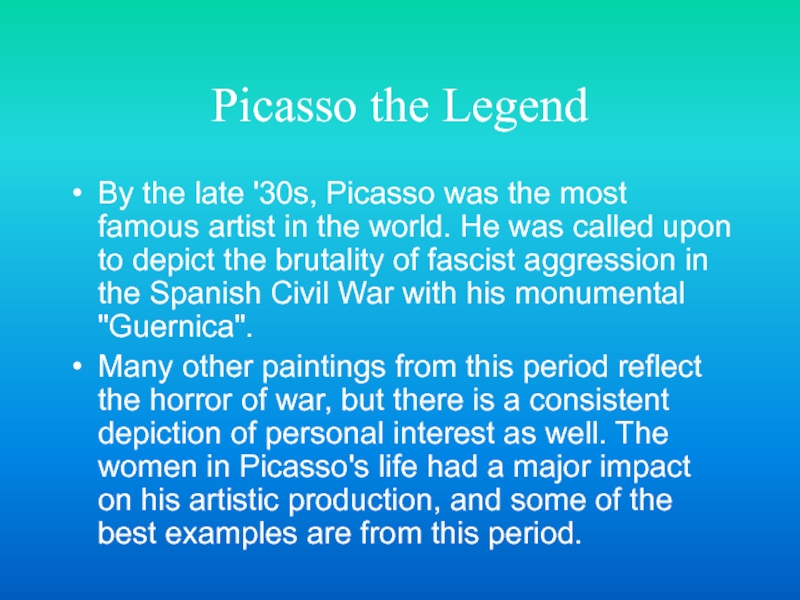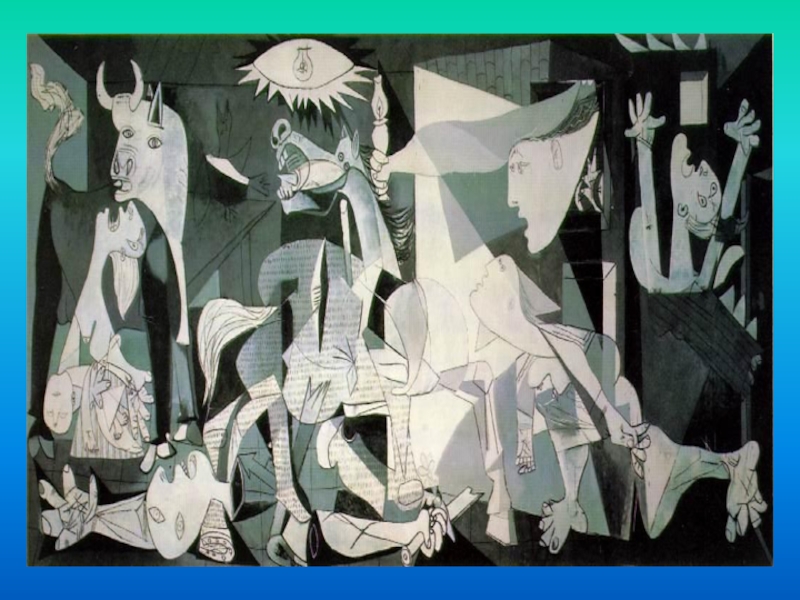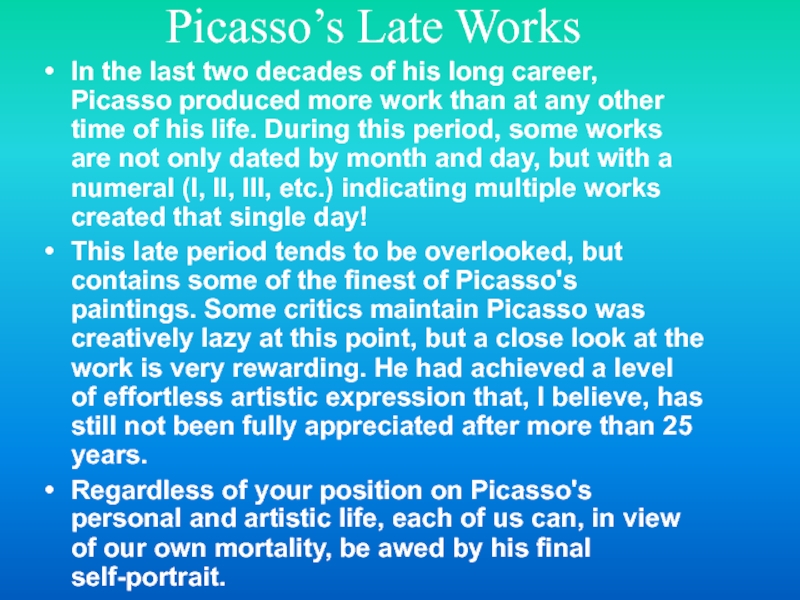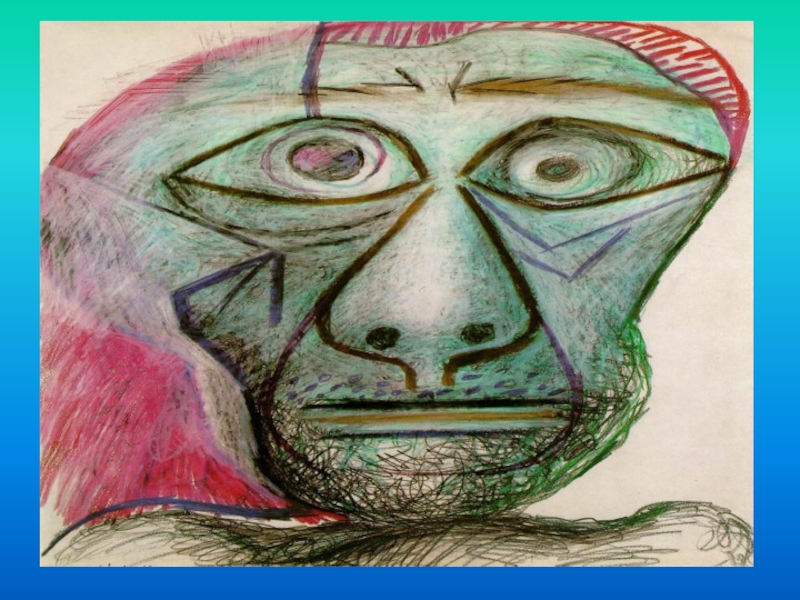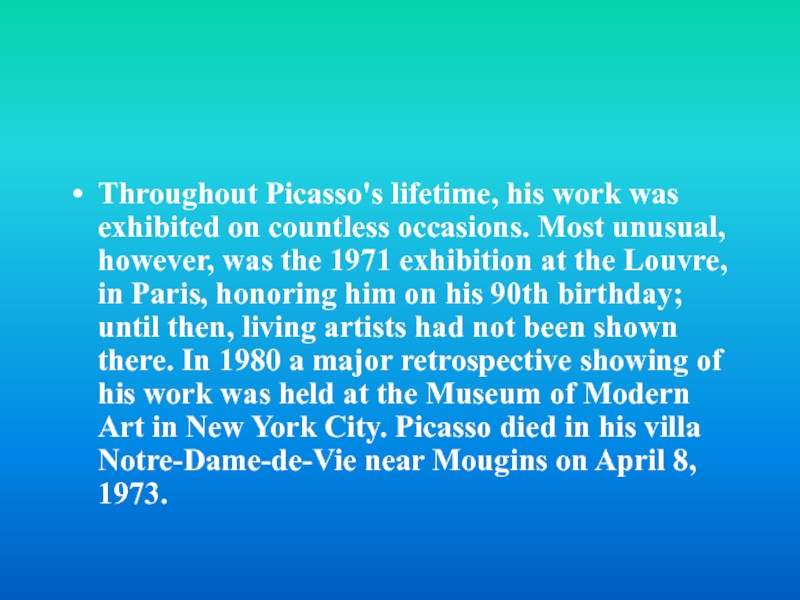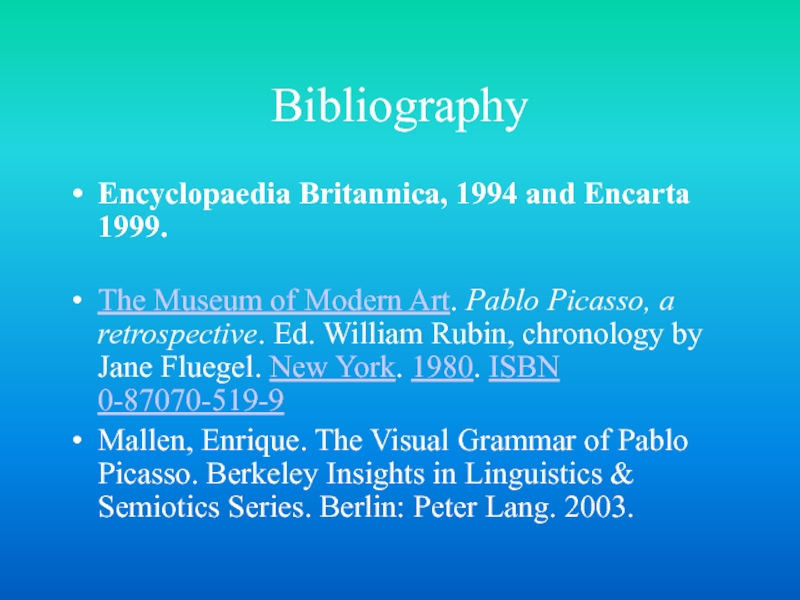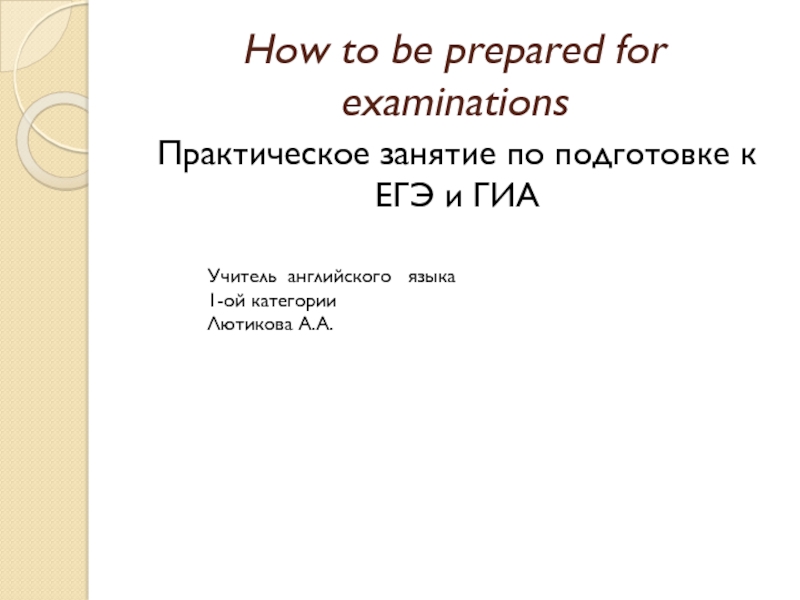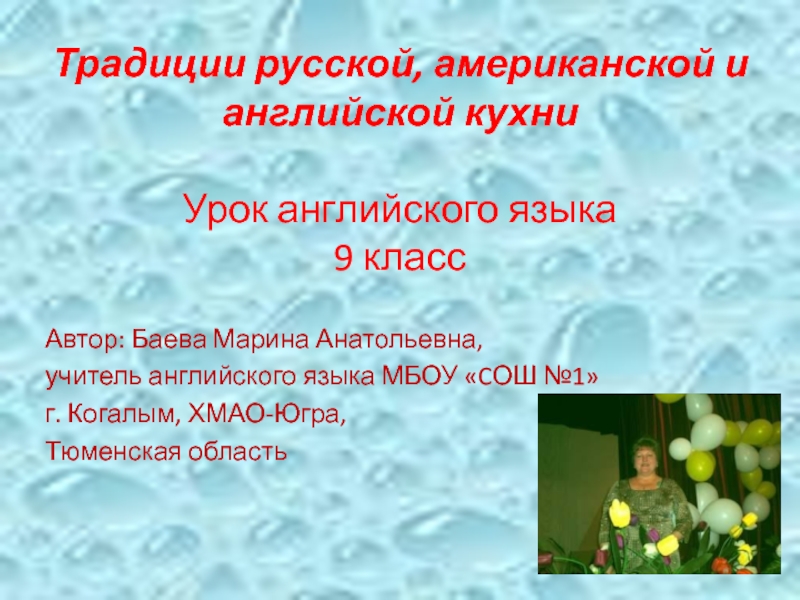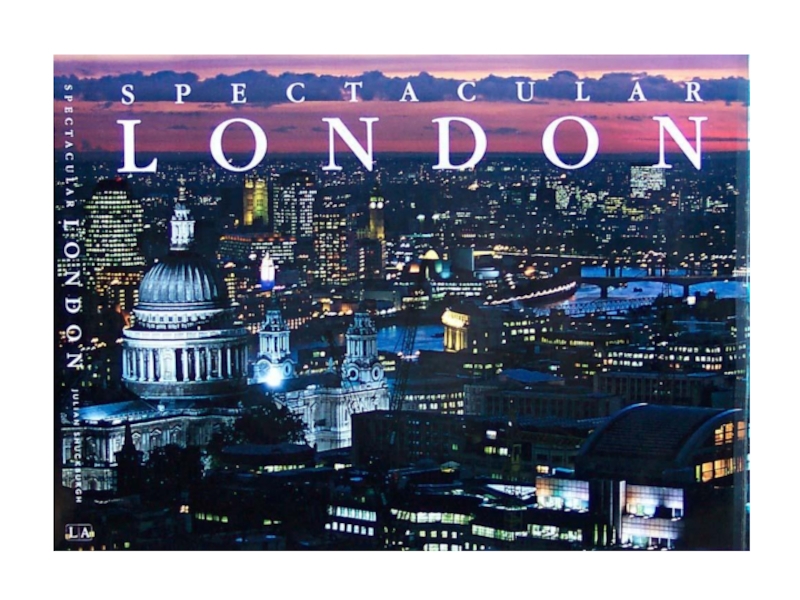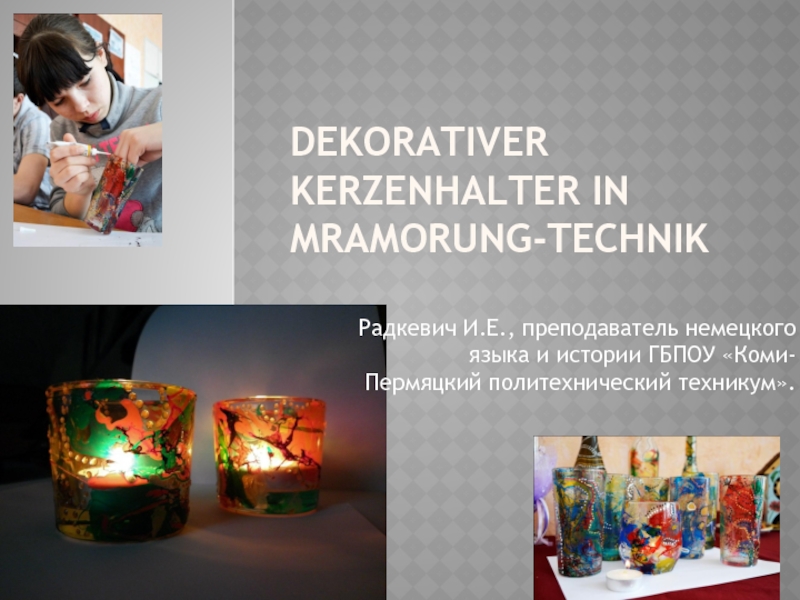Слайд 1Pablo Picasso
By: Beznoschenko Valentina
Слайд 2Early Years
Pablo Picasso was born on October 25, 1881
in Malaga, Spain.
He started painting and drawing at a very
young age
Picasso’s father José Ruiz y Blasco was also a painter himself and recognized Pablo’s talent at his young age.
Слайд 3
Picasso's first painting at age 8, Picador (1889).
Слайд 4Pablo’s father taught him the basics of formal and academic
art training.
It involved figure drawing and painting in oil.
Picasso
attended many art schools during his childhood, many those of where his father taught
He never finished his studies at the Academy of Arts in Madrid, dropping out after only a year
Слайд 5In the early years of the twentieth century, Picasso, still
a struggling youth, began a long term relationship with Fernande
Olivier. It is she who appears in many of the Rose period paintings. After garnering fame and some fortune, Picasso left Olivier for Marcelle Humbert, whom Picasso called Eva. Picasso included declarations of his love for Eva in many Cubist works. Humbert was diagnosed with cancer and during her rapid deterioration, Picasso administered to her every need, making daily trips across Paris to visit her in the hospital.
Слайд 6In 1918, Picasso married Olga Khoklova, a ballerina with Sergei
Diaghilev's troupe, for whom Picasso was designing a ballet, Parade,
in Rome. Khoklova introduced Picasso to high society, formal dinner parties, and all the social niceties attendant on the life of the rich in 1920s Paris. The two had a son, Paulo, who would grow up to be a dissolute motorcycle racer and chauffeur to his father.
Слайд 7Rose Period
In 1905-6, Picasso's palette began to lighten considerably,
bringing in a distinctive beige or "rose" tone. The subject
matter also is less depressing. Here are the first appearances by the circus performers and clowns that will populate Picasso's paintings at various stages through the rest of his long career.
Слайд 8“Girl in Chemise” 1905
“Two Youths” 1905
Слайд 9Blue Period
Shortly after moving to Paris from Barcelona, Picasso
began to produce works that were suffused in blue. This
particular pigment is effective in conveying a sombre tone. The psychological trigger for these depressing paintings was the suicide of Picasso's friend Casagemas. The Blue Period work is quite sentimental, but we must keep in mind that Picasso was still in his late teens, away from home for the first time, and living in very poor conditions.
Слайд 10“Le Gourmet” 1901
“The Tragedy” 1903
Слайд 11Cubism Period
In late 1906, Picasso started to paint in
a truly revolutionary manner. Inspired by Cézanne's flattened depiction of
space, and working alongside his friend Georges Braque, he began to express space in strongly geometrical terms. These initial efforts at developing this almost sculptural sense of space in painting are the beginnings of Cubism
Слайд 12“Self Portrait with Palette” 1906
Слайд 14Between the Wars
The collaboration between Picasso and Braque was
ended by the First World War. After the war, Picasso,
reflecting society's disillusionment and shock with the technological horrors of the war, reverted to a Classicist mode of representation. At the same time, however, he was continuing to push Cubism into new paths. During the '30s Picasso became tangentially connected with the Surrealist movement. Although Andre Breton tried to recruit Picasso, he remained ultimately aloof from any school of art throughout his career
Слайд 17Picasso the Legend
By the late '30s, Picasso was the
most famous artist in the world. He was called upon
to depict the brutality of fascist aggression in the Spanish Civil War with his monumental "Guernica".
Many other paintings from this period reflect the horror of war, but there is a consistent depiction of personal interest as well. The women in Picasso's life had a major impact on his artistic production, and some of the best examples are from this period.
Слайд 19Picasso’s Late Works
In the last two decades of his
long career, Picasso produced more work than at any other
time of his life. During this period, some works are not only dated by month and day, but with a numeral (I, II, III, etc.) indicating multiple works created that single day!
This late period tends to be overlooked, but contains some of the finest of Picasso's paintings. Some critics maintain Picasso was creatively lazy at this point, but a close look at the work is very rewarding. He had achieved a level of effortless artistic expression that, I believe, has still not been fully appreciated after more than 25 years.
Regardless of your position on Picasso's personal and artistic life, each of us can, in view of our own mortality, be awed by his final self-portrait.
Слайд 21Throughout Picasso's lifetime, his work was exhibited on countless occasions.
Most unusual, however, was the 1971 exhibition at the Louvre,
in Paris, honoring him on his 90th birthday; until then, living artists had not been shown there. In 1980 a major retrospective showing of his work was held at the Museum of Modern Art in New York City. Picasso died in his villa Notre-Dame-de-Vie near Mougins on April 8, 1973.
Слайд 22Bibliography
Encyclopaedia Britannica, 1994 and Encarta 1999.
The Museum of Modern Art.
Pablo Picasso, a retrospective. Ed. William Rubin, chronology by Jane
Fluegel. New York. 1980. ISBN 0-87070-519-9
Mallen, Enrique. The Visual Grammar of Pablo Picasso. Berkeley Insights in Linguistics & Semiotics Series. Berlin: Peter Lang. 2003.
